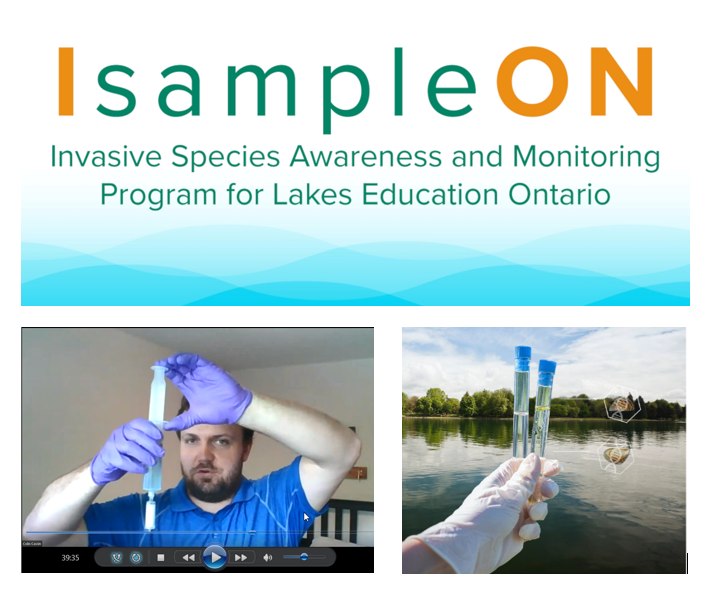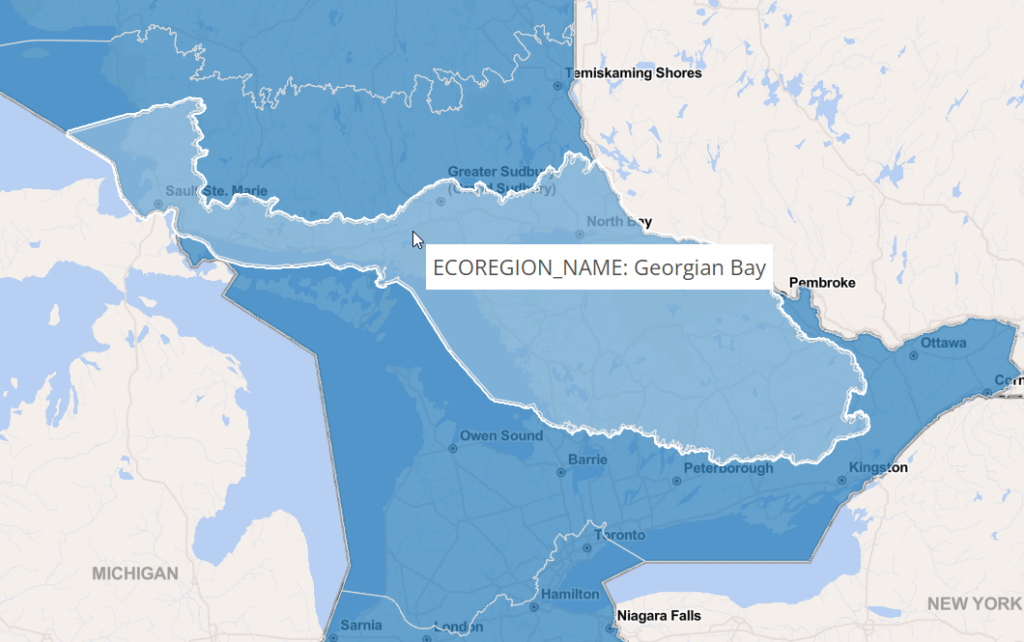
Since 2021, FOCA and the Invasive Species Centre (ISC) have partnered in a community science program called IsampleON (Invasive Species Awareness and Monitoring Program for Lakes Education Ontario), with funding from the Ministry of Natural Resources (MNR).
Read about the 2023 and 2024 IsampleON programs below, and also on page 16-17 of the 2024 Ontario Lake Stewards Magazine (download PDF).


Action is needed to protect inland lakes that are free from or at high risk of aquatic invasion.
We know early detection is essential to protect our lakes and rivers from the negative impacts of aquatic invaders on these key ecosystems.

Recap of the 2024 FOCA IsampleON program:
The focus of this year’s study was to answer the research question: Does eDNA sampling yield the same results as traditional sampling methods when utilized in a community science monitoring project? and the answer was: Yes!
Read the Final 2024 IsampleON Report (download PDF)
Zebra mussels and spiny waterflea were the species of interest for the 2024 IsampleON program, and the two sampling methods compared were traditional plankton towing nets and eDNA analysis.
While traditional sampling can provide a positive visual identification at the larval stage, eDNA is able to detect genetic material at all life stages and can detect species that are present in low numbers.
In 2024, five volunteer samplers on member lakes participated in both eDNA and traditional zooplankton monitoring. Results indicate a positive result for Zebra mussels on one lake, and negative for the other four lakes. Both methods (plankton haul and eDNA) generated the same results in each case, demonstrating that they may be used together to provide an additional metric of validation when monitoring for invasive species.
Thank you to our volunteers for their hard work and dedication to this year’s program!

EARLIER & RELATED NEWS:
November 2024 – eDNA in the news: Scotland Leads the Way: National Habitat Condition Monitoring using State of the Art Machine Learning & eDNA Data (Nature Metrics). QUOTABLE: “The results showed that eDNA data could classify sites by habitat status (e.g., degraded vs. restored) and map species distributions across regional scales cost-effectively. For marine environments, eDNA benchmarked favorably against traditional methods for assessing sediment quality.”
July 2024 – the Invasive Species Awareness and Monitoring Program for Lakes Education Ontario (IsampleON) is underway for 2024, with 5 volunteer samplers on member lakes that are doing both traditional plankton haul net sampling, and eDNA water sampling for zebra mussels and spiny water flea. Stay tuned for updates!
In both 2023 and 2024, our program involved taking water samples for eDNA testing. What is eDNA and what can it tell us about the presence of particular species in a waterbody? Find out by downloading FOCA’s information sheet about eDNA (PDF, 2 pages)

Learn more about the program and the invaders! Share news about preventing the spread of invasive species in your association newsletter or e-news, and on social media channels.
How can you help prevent the spread of invasive species in cottage country? Some general best practices are to garden using only non-invasive plants, dispose of bait properly, buy firewood locally, and inspect and clean your boat & motor when changing water bodies (it’s the law!).
Find it. Report it. Monitor it. Prevent the Spread. This August, our Association is taking part in the IsampleON program to promote invasive species awareness, and monitor our waterways in Ontario! Learn more about the program from FOCA, here: https://foca.on.ca/isampleon/


Learn more from our program partners: https://www.invasivespeciescentre.ca/invasive-species-awareness-and-monitoring-program-for-lakes-education-in-ontario/
In 2023, FOCA selected volunteers on dozens of lakes to help collect water samples from selected waterbodies. Utilizing the latest in eDNA detection technology, this work will broaden our collective understanding of the spread of harmful invasive species. The target species for testing in 2023 was Water soldier (Stratiotes aloides). The region of greatest concern for spread, and the monitoring target for 2023, is broadly the eastern and central portions of Ecoregion 5E (roughly Ottawa through Parry Sound-Muskoka; click on the map at the side to enlarge).
June 2023 – The first program commitment is to watch the 1 hour webinar about this year’s sampling target species and protocols.
SAMPLERS: Please review the 1 hour program overview video at the side (click to enlarge and unmute the video). This includes information about the species being sampled for, eDNA, sampling protocol and more.
Thanks for being part of this volunteer citizen science effort!
Related resources:
- about Zebra mussels from our partners at ISC
- about spiny waterflea from ISC
- report a sighting of an invasive species, using EDDmapS Ontario
Environmental impacts of zebra and quagga mussels are serious. Invasive mussels filter plankton out of the water, depleting food sources for native species. Large colonies can take over fish spawning areas and beaches. Zebra and quagga mussels can reduce native mussels and increase the presence of aquatic weeds and toxic algal blooms, which can have health impacts on people, pets and native wildlife.

Please note: the following is archival material, and some links to third-party resources may no longer be active.
December 18, 2022 – FOCA’s Terry Rees spoke to CBC about eDNA and how the technology can be used to help citizens become “ecological detectives” (in French)
One 2021 program volunteer in the Township of North Kawartha got their Mayor to participate in hanging the “Help Protect our Lakes” sign at the local boat launch, to remind boaters to “Clean & Drain & Dry” to prevent spreading invasive species!

Earlier Media Coverage:
- August 6, 2021 – The Mayor of the Township of North Kawartha and Big Cedar Lake create a Public Service Announcement (PSA) about Clean, Drain, Dry on Facebook
- June 18, 2021 – IsampleON invasive species (Great Lakes Daily News)
- June 17, 2021 – video: Community-focused invasive species program (CTV News)
- June17, 2021 – IsampleON seeks community help with invasive species project (Kingston Whig Standard)
- June 16, 2021 – Sault’s Invasive Species Centre launches community focused program (CTV Northern)
- June 15, 2021 – Media Release: IsampleON (Municipality of Marmora and Lake)
- March 26, 2021 – Zebra/Quagga mussels found in moss ball products across Canada: Learn proper disposal and reporting (ISC)
For more about FOCA’s work on invasive species, visit our webpage: https://foca.on.ca/invasive-species

